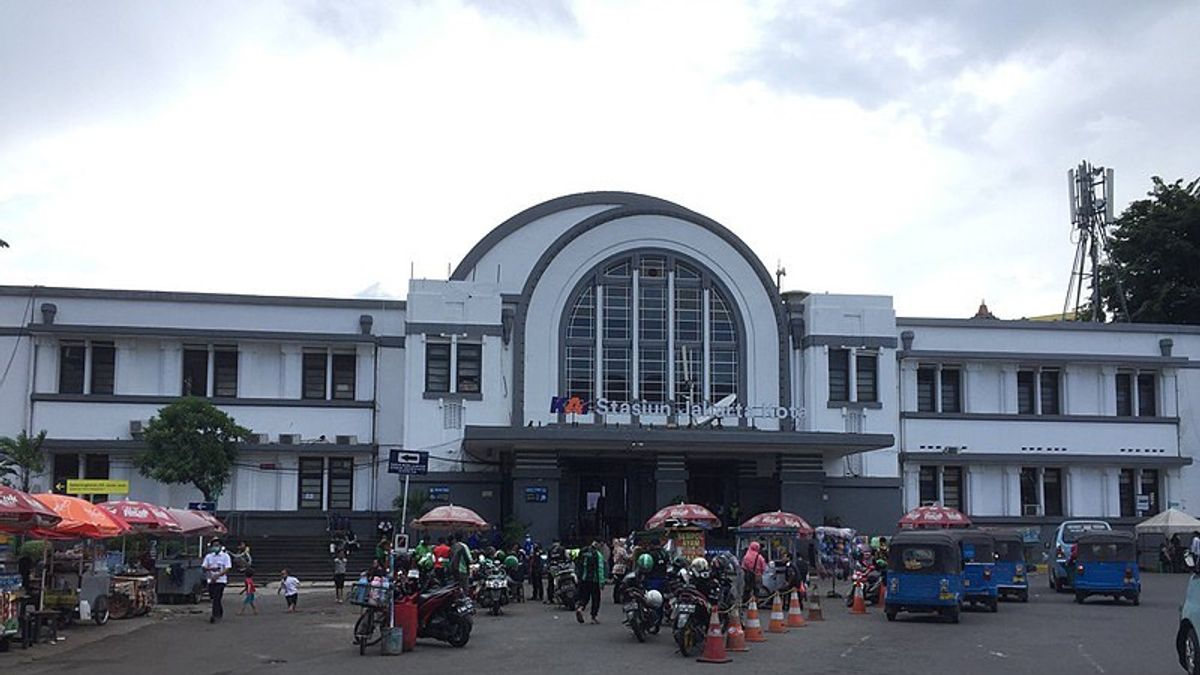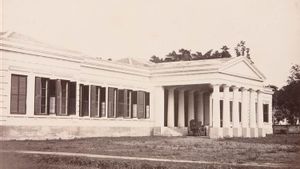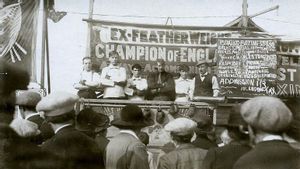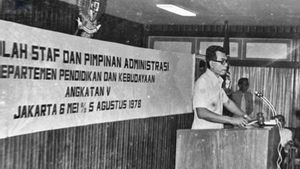JAKARTA – Today, 17 years ago, April 25, 2005, the Jakarta Kota (Beos) Train Station is increasingly being recognized as a cultural heritage building. The status was obtained from two decrees (SK) at once. Governor's Decree in 1993, and most recently a Ministerial Decree.
The determination was not only due to the unique architecture of the station building. The Jakarta Kota Station is actually considered by the Indonesian government to have a major role in the management of rail traffic in Jakarta. The building also has a long history for the growth and development of Jakarta.
The train was once the most valuable transportation in the Dutch East Indies. His presence is considered a great victory for mankind over distance and time. The Dutch colonial government was fortunate not to play since the presence of the train in 1864.

The process of sending agricultural products can be carried out optimally. In fact abundant. This profit made the Dutch actively build railroads in remote parts of the country. Especially in Batavia. The city nicknamed the Queen of the East got the top priority of the Dutch East Indies government. Because, Batavia is the center of government that needs to be privileged.
The construction of the train station in Batavia was carried out on a massive scale. The presence of Batavia Zuid Station or South Batavia Station (now: Jakarta Kota Station) is proof. The station, which was built in 1870, is like a silent witness that the people of Batavia use trains to travel daily. Initially, it was still a simple station.
However, the Dutch colonial government chose to carry out renovations in 1926. Two years later, the station was inaugurated on a large scale by Governor-General Andries Cornelis Dirk de Graeff (1926-1931). He also planted a buffalo head as a symbol of the inauguration of the station. Later people in Batavia called the station Beos Station.

“There are many versions of the origin of the word Beos. The first is Bataviasche Oosterspoorweg Maatschapij (Batavia rail carrier), the other is Batavia En Omstreken (Batavia and its surroundings) which means a station that connects Batavia and its surrounding cities, namely Bekassie (Bekasi), Buitenzorg (Bogor), Bandoeng (Bandung), Krawangsche (Karawang), and others.”
“Before it was known as Beos Station, this station was known as Batavia Zuid (South Batavia Station). This station was built in 1870 and closed in 1926 for renovation into a more modern building, with the help of a genius architect born in Tulung Agung, Frans Johan Louwrens Ghijsels. The renovation of this station was completed two years later, on August 19, 1929, and officially operated on October 8, 1929,” said William Yang in the book Tycoon: The Birth of Conglomerates (2019).
The presence of Beos Station was eagerly awaited by the citizens of Batavia. Those who use it are not only the Dutch. Other ethnic groups also take part in using the latest transportation in Batavia. These include Chinese, Arabs, Jews, Moors, and Mardijkers.
Since then Beos Station began to have an important role. The station played a role in rail traffic management in Batavia, then Jakarta (after Indonesia's independence). The Indonesian government also maintains the authenticity of the building.

At its peak, the station was designated as a cultural heritage building by the DKI Jakarta Government in 1993. The Indonesian Ministry of Education and Culture also did not forget to issue a decree on the designation of the Beos train station as a cultural heritage building on April 25, 2005, which is a memory today.
"Since the Dutch colonial era until now, Beos Station is a building that has a decisive role in rail traffic management in Jakarta," as written in the book Cagar Budaya di Wilayah DKI Jakarta (1996).
VOIR éGALEMENT:
The English, Chinese, Japanese, Arabic, and French versions are automatically generated by the AI. So there may still be inaccuracies in translating, please always see Indonesian as our main language. (system supported by DigitalSiber.id)














